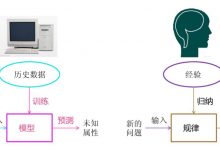量词逻辑量词里面的v表示?
As we know that in an AI-based agent, the knowledge is represented through two types of logic: The propositional logic and the predicate logic. In the propositional logic, we have declarative sentences, and in the predicate logic, we have a predicate defining a subject. But in both these systems, we were not able to define the quantity of any subject.
我们知道,在基于AI的代理中 ,知识通过两种逻辑表示: 命题逻辑和谓词逻辑 。 在命题逻辑中,我们有陈述句,在谓词逻辑中,我们有谓词定义主语。 但是在这两个系统中,我们都无法定义任何主题的数量。
For example:
例如:
The predicate logic: like(boy, apple) defines that boy likes apple. But take a look at the following two statements:
谓词逻辑: like(boy,apple)定义男孩喜欢苹果。 但是,请看以下两个语句:
-
Some boys like apple
有些男孩喜欢苹果
-
All boys like apple
所有男孩都喜欢苹果
These sentences cannot be defined completely with the help of first-order predicate logic. So, to solve this issue, the quantifiers were used.
这些句子不能借助一阶谓词逻辑来完全定义。 因此,为了解决这个问题,使用了量词 。
Quantifiers are the quantity defining terms which are used with the predicates.
量词是与谓词一起使用的数量定义术语。
量词的类型 (Types of quantifiers)
There are two types of quantifiers:
量词有两种:
1)通用量词 (1) Universal Quantifier)
The universal quantifier is used to define the whole subject population under the predicate. It can be used anywhere where the phrases like: \’for all\’, \’for each\’, \’for every\’ are used.
通用量词用于定义谓词下的整个主题种群。 它可以在使用诸如“ for all” , “ for each” , “ for every”之类的短语的任何地方使用。
The symbol \’∀\’ is used to represent universal Quantifier. To combine the universal quantifier with the predicate and the subject, implication sign, \’->\’ is used.
符号“∀”用于表示通用量词。 为了将通用量词与谓词和主语结合使用,使用了隐含符号“->” 。
Example:
例:
∀x: Boy(x) -> like(x,Apple)
[/code]
The above statement says that: \’All boys like apple\’.
上面的陈述说: \’所有男孩都喜欢苹果\’ 。
2)存在量词 (2) Existential Quantifier)
The Existential Quantifier is used at the places where only some part of the subject\’s population is to be defined under the predicate. It can be used at all the places where the following phrases are used: \’There exist\’, \’For some\’, \’For at least\’, etc.
存在量词用于在谓词下仅定义对象总体一部分的地方。 它可以在使用以下短语的所有地方使用: “存在” , “用于某些” , “至少用于”等。
The Existential Quantifier is represented by the symbol \’∃\’. To combine the Existential quantifier with the predicate and the subject, the conjunction symbol, \’^\’ is used.
存在量词用符号“∃”表示 。 为了将存在量词与谓词和主语结合起来,使用了连字符“ ^” 。
Example:
例:
∃x: Boy(x) ^ like(x,apple)
[/code]
The above statement depicts that there exists a boy who likes apple. Or we can say that there are some boys who like an apple.
上面的陈述描述了存在一个喜欢苹果的男孩。 或者我们可以说有些男孩喜欢苹果。
量词的性质 (Properties of Quantifiers)
-
∀x.∀y is the same as ∀y.∀x
∀x.∀y与∀y.∀x相同
-
∃x.∃y is the same as ∃y.∃x
∃x.∃y与∃y.∃x相同
-
∃x.∀y is not the same as ∀y.∃x
∃x.∀y与∀y.∃x不同
-
Quantifier duality: Each quantifier can be expressed using the other one. This is done by complementing and changing the symbols.
量词对偶:每个量词都可以用另一个来表达。 这可以通过补充和更改符号来完成。
Example:
例:
∀x likes(x, Ice-cream) is equivalent to ~∃x ~likes(x, Ice-cream).∃x likes(x, Chocolate) is equivalent to ~∀x ~likes(x, chocolate).
[/code]
翻译自: https://www.includehelp.com/ml-ai/introduction-to-quantifiers-in-the-knowledge-representation-in-an-agent-based-on-artificial-intelligence.aspx
量词逻辑量词里面的v表示?
 爱站程序员基地
爱站程序员基地
![[翻译] Backpressure explained — the resisted flow of data through software-爱站程序员基地](https://aiznh.com/wp-content/uploads/2021/05/10-220x150.jpeg)

